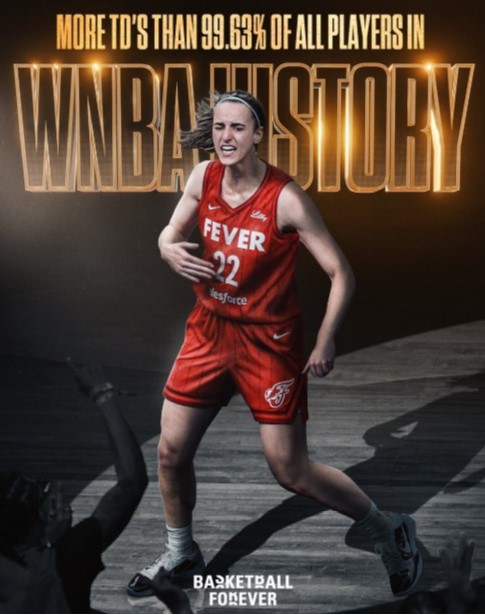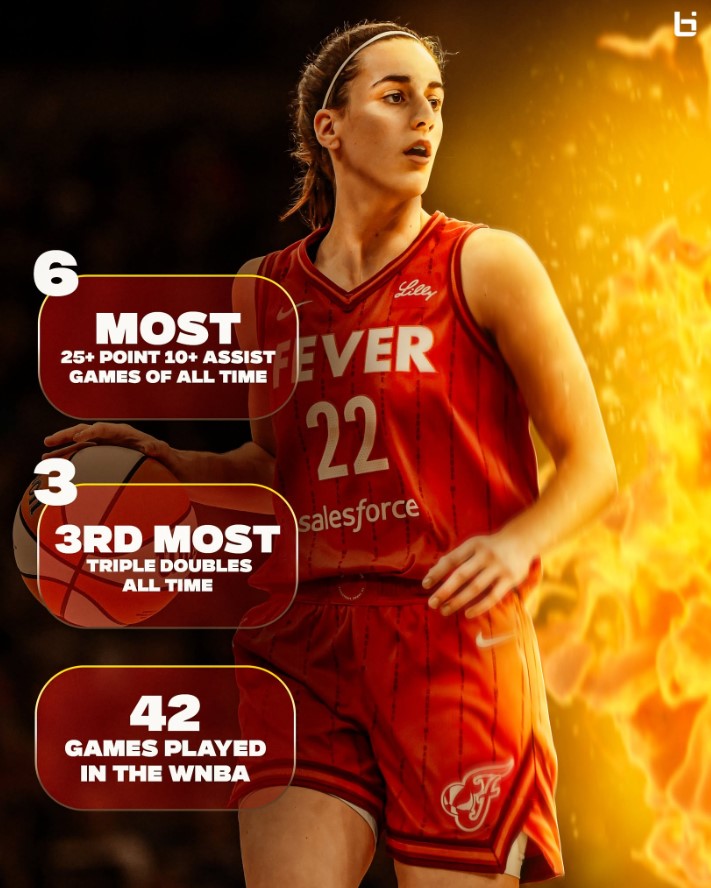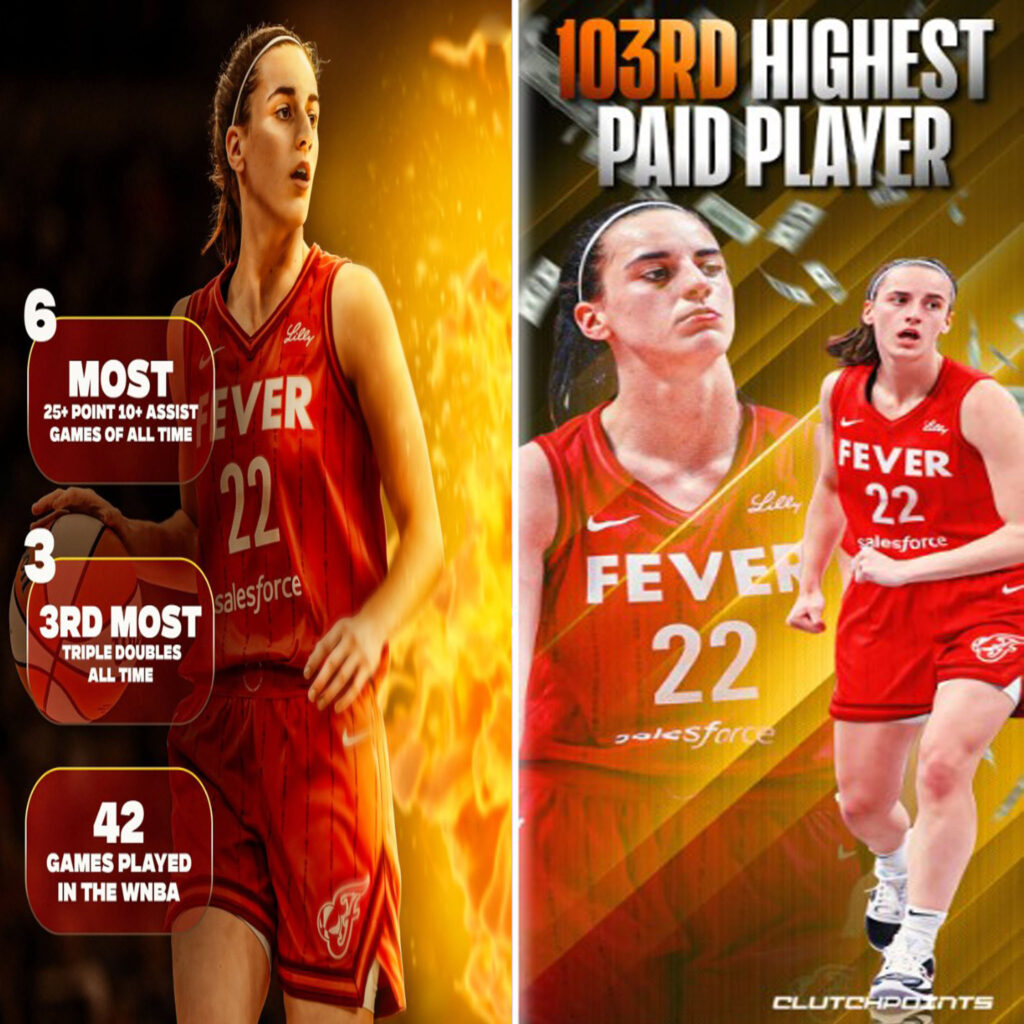The Great WNBA Salary Scandal: Caitlin Clark’s Shocking Pay Disparity
While millions of fans chant Caitlin Clark’s name in packed arenas across America and corporate sponsors pour billions of dollars into the WNBA specifically because of her magnetic star power, the 22-year-old phenomenon finds herself being systematically robbed in broad daylight by a league that owes its current unprecedented popularity entirely to her presence on the court.

The statistics reveal a scandal so outrageous that it borders on criminal exploitation: Clark, who serves as the undisputed face and primary marketing asset of the entire Women’s National Basketball Association, ranks as merely the 103rd highest-paid player out of 144 total athletes competing in the league this season.
To compound this already shocking revelation, the situation becomes even more insulting when examining Clark’s financial standing within her own team, the Indiana Fever, where she inexplicably earns less money than ten of her teammates despite being the sole reason why television ratings have skyrocketed and attendance figures have reached historic highs wherever she plays.
This unprecedented salary structure represents what many industry experts are calling the most egregious case of financial exploitation in modern professional sports history, where the athlete who generates the most revenue, attracts the most viewers, and drives the most merchandise sales receives compensation that would be considered insulting for a benchwarmer on any other professional team.

The absurdity of this situation becomes crystal clear when considering that Clark’s teammate Kelsey Mitchell, whose name recognition barely extends beyond hardcore basketball fans, commands a salary of $249,244 while the global superstar who has transformed women’s basketball from a niche sport into mainstream entertainment sits near the bottom of the pay scale like a forgotten rookie.
Even more damning is the fact that established superstars like back-to-back MVP A’ja Wilson rank only 21st in league salary rankings, while last year’s WNBA Finals MVP Jonquel Jones finds herself positioned at a shocking 28th place, creating a compensation system that seems to operate in complete opposition to basic principles of market value and athletic achievement.
This systematic undervaluation of talent creates a bizarre alternate reality where the players who generate the least interest, produce the lowest television ratings, and contribute the least to the league’s overall financial success somehow receive significantly higher compensation than the transcendent talents who have elevated the entire sport to unprecedented levels of popularity and profitability.

The current collective bargaining agreement, which governs these unconscionable salary structures, represents a relic from an era when the WNBA struggled for relevance and operated more like a charity case than a legitimate professional sports league capable of generating substantial revenue through television contracts, sponsorship deals, and merchandise sales.
However, with this outdated CBA scheduled to expire at the conclusion of the current season, Clark and other emerging superstars will finally have the opportunity to demand compensation packages that reflect their actual market value and their enormous contributions to the league’s recent transformation from financial liability to profitable entertainment enterprise.
The timing of this renegotiation could not be more critical, as the WNBA finds itself at an inflection point where it must choose between perpetuating an antiquated system that treats its biggest stars like interchangeable commodities or embracing a modern approach that rewards excellence, star power, and revenue generation with appropriate financial compensation.

Industry observers predict that Clark’s presence at the negotiating table will fundamentally reshape how the WNBA structures player compensation, potentially creating a system where superstars can earn salaries commensurate with their impact on league revenues, television ratings, and overall brand value rather than being artificially constrained by arbitrary salary caps that made sense when the league struggled for survival but now serve only to perpetuate financial inequality.
The resolution of this salary scandal will determine whether the WNBA can evolve into a truly professional league that rewards its most valuable assets appropriately, or whether it will continue operating under a system that essentially punishes excellence while rewarding mediocrity through a compensation structure that defies all logic, fairness, and basic business principles.